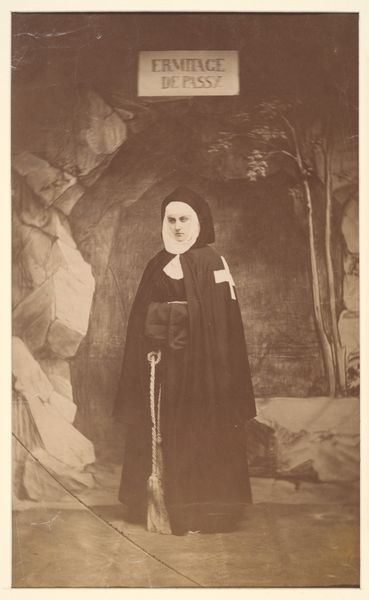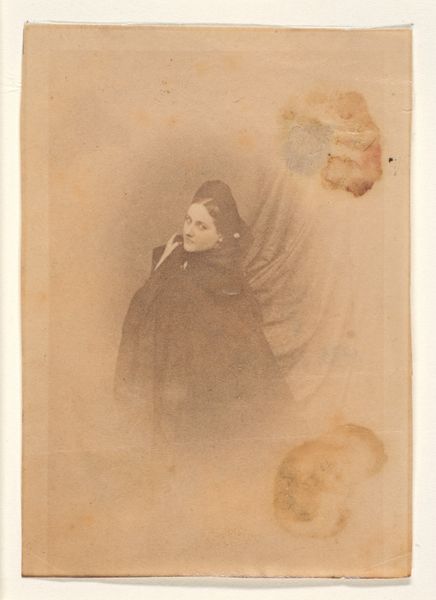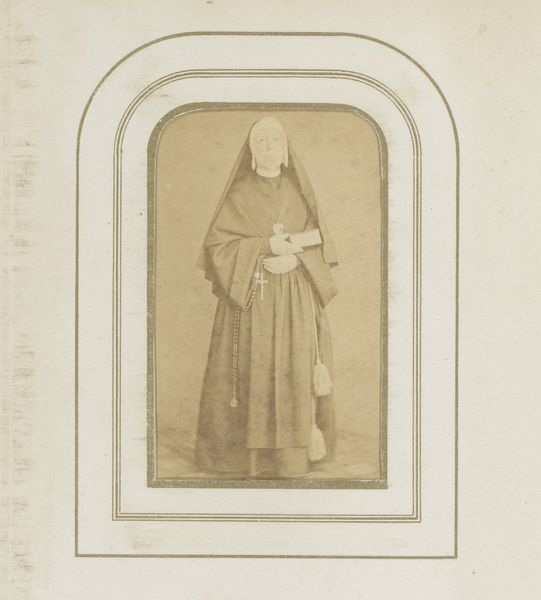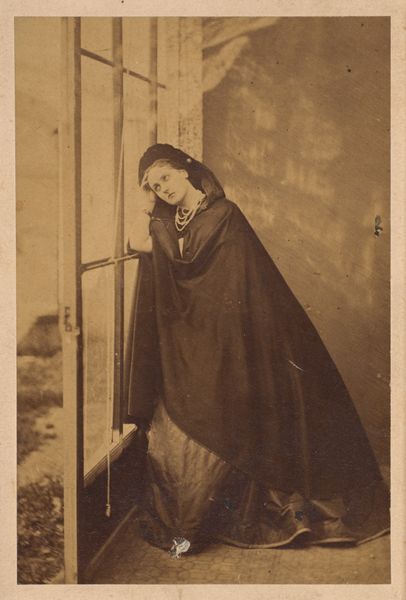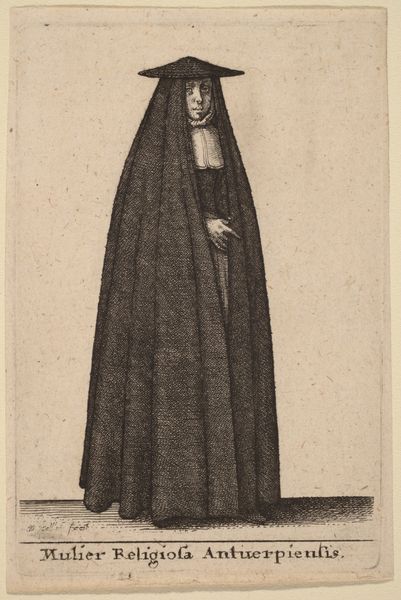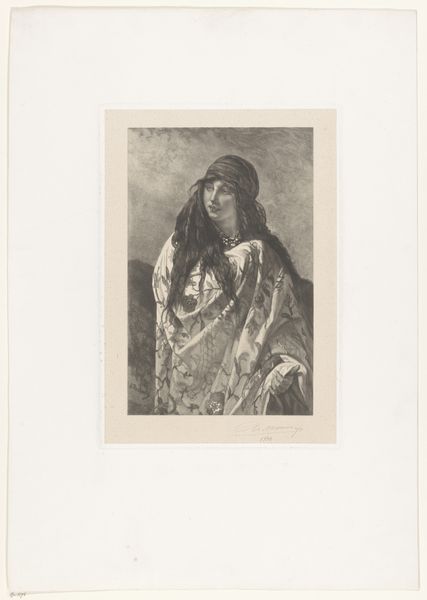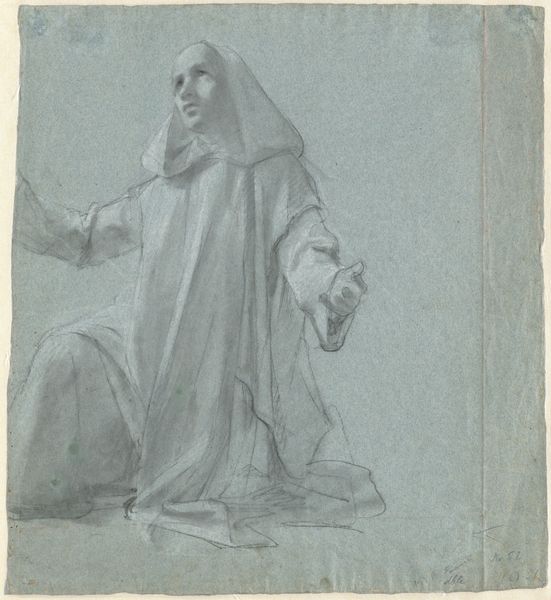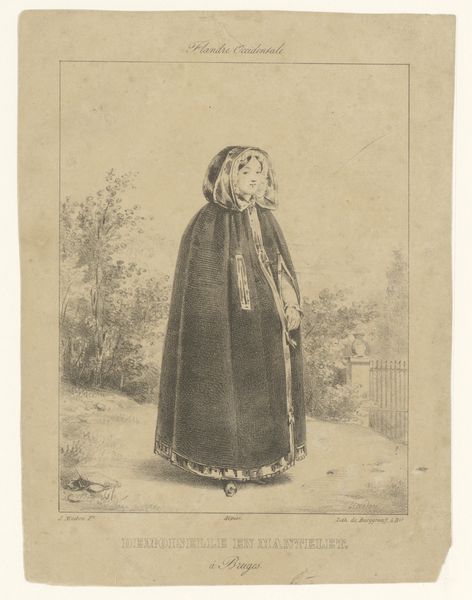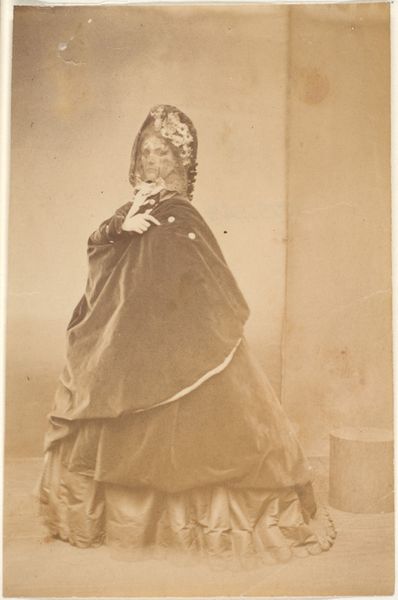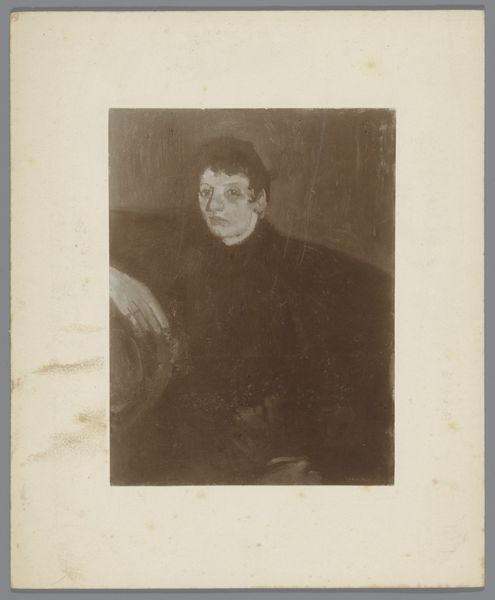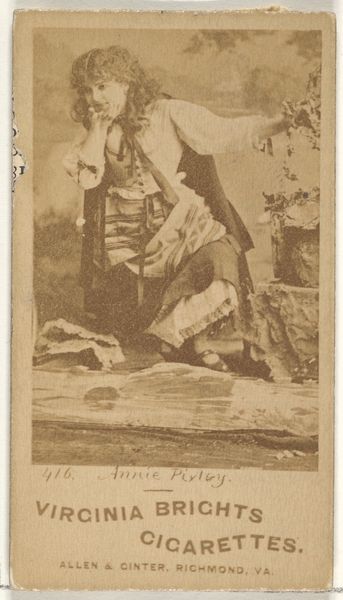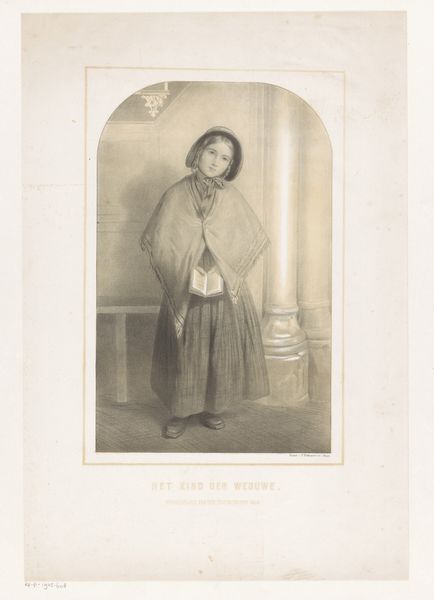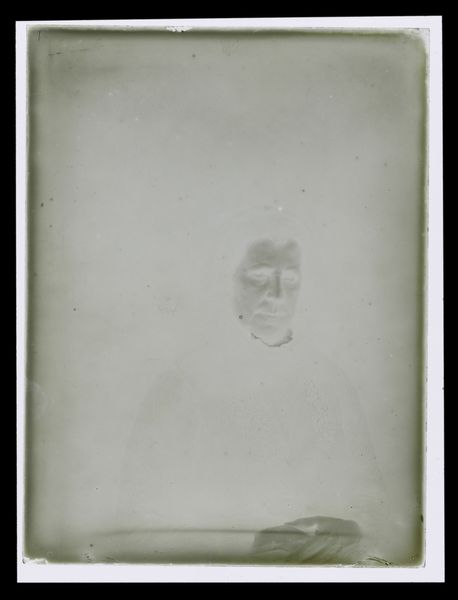
Dimensions: Image: 12 x 8.5 cm (4 3/4 x 3 3/8 in.) Mount: 13 x 9.6 cm (5 1/8 x 3 3/4 in.) Mat: 35.6 x 27.9 cm (14 x 11 in.)
Copyright: Public Domain
Editor: So, this is Pierre-Louis Pierson's "Ermitage de Passy," created around 1863. It's a gelatin-silver print with pencil and colored pencil, currently housed in the Met. I’m immediately struck by the textural interplay – the smooth photographic base contrasted with the deliberate roughness of the pencil work. What aspects of this piece particularly resonate with you? Curator: I find it fascinating how Pierson manipulates photographic processes with manual interventions. This blurring of the line between supposedly objective documentation and artisanal labor reveals much about 19th-century anxieties around industrial production. Photography, then still a relatively new technology, threatened traditional art forms, and Pierson's methods here directly engage with and contest that threat. Editor: So it's about the anxiety around the automation of portraiture? The tension between photography and traditional art? Curator: Exactly! And we have to consider the social context of the sitter, potentially a noble woman of leisure and piety. What kind of social labor allows her to sit and be immortalized in art? The costuming, materials, and process of the work all speak to consumption, the ability to both purchase new art technologies and hand labor which gives art its elevated perceived status. Are we really looking at romanticism here, or an elaborate production meant to convey power? Editor: It's incredible how analyzing the materials and production broadens our view. Curator: Precisely. Examining these choices sheds light on the social relations embedded within artistic creation. It reminds us that artistic production is never separate from the broader economic and social forces at play. Thinking materially adds a more meaningful lens, don't you agree? Editor: Absolutely, it's less about the aesthetic impression and more about the underlying structure of how things are made and by whom. Curator: And that's a valuable shift in perspective, opening doors to deeper understanding. Editor: Thanks, it’s definitely given me a new appreciation for this piece.
Comments
No comments
Be the first to comment and join the conversation on the ultimate creative platform.
